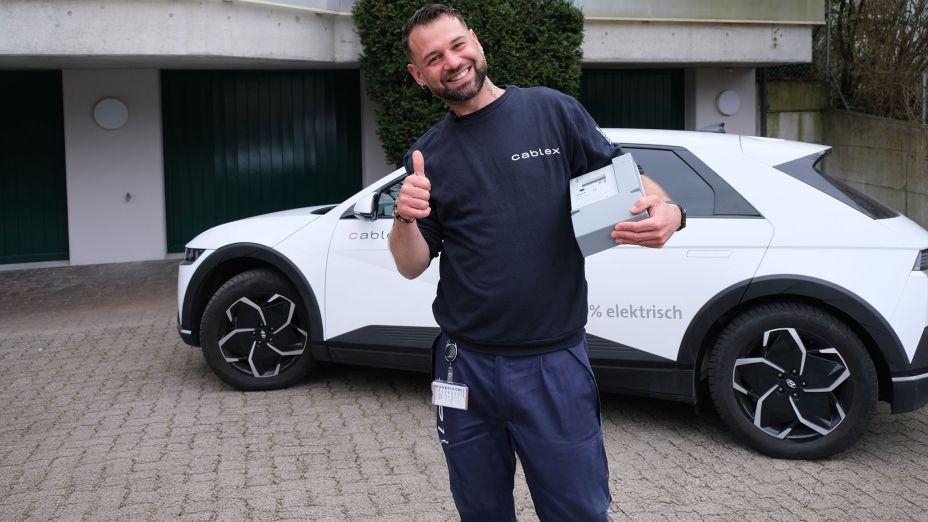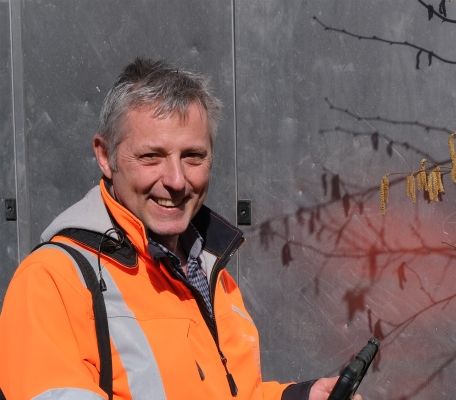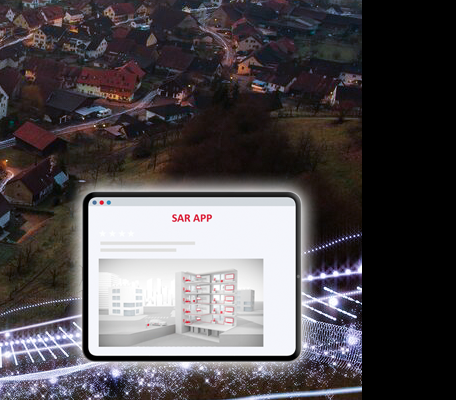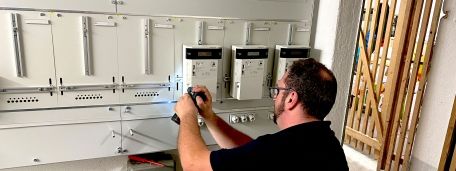XGS-PON therefore means: X=10 G=Gigabit S=symmetrical P=passive O=optical N=network

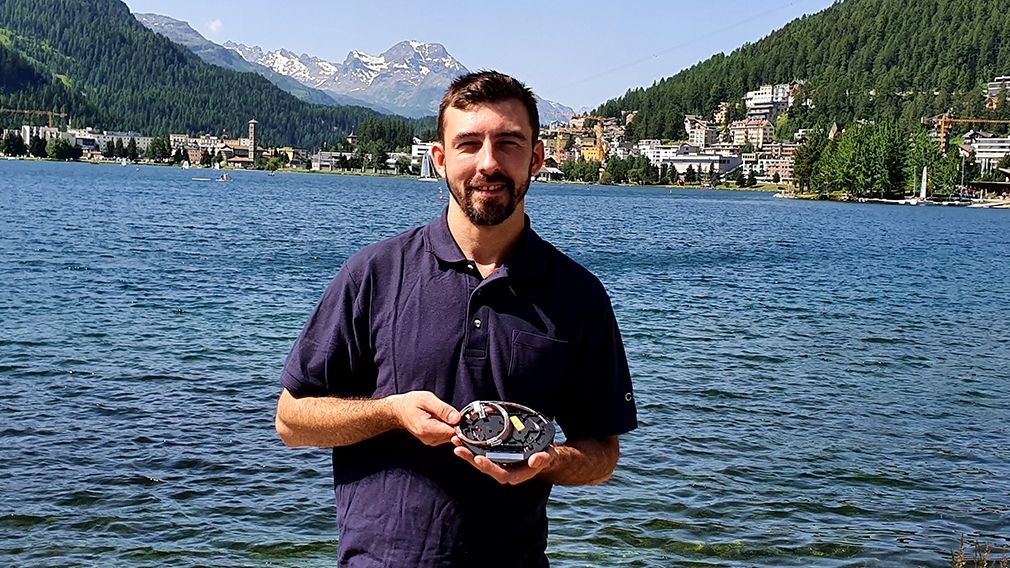
What is a PON?
PON stands for "Passive Optical Network". This refers to an optical access network (optical fibre network) which, in the area between the local exchange and the OTO socket at home, only consists of components (cables, plugs, sleeves or splitters) that do not require a power supply.
What does XGS stand for?
At cablex, when we talk about XGS-PON, we are referring to the new "splitter technology". It makes it possible to connect up to 32 customers with a single fibre. Each customer can be offered a bandwidth of 10 gigabits per second. The upload and download speed is the same, which is why it's called a symmetrical PON.
Explanation.
What is the difference between XGS-PON and Fibre to the Building or Fibre to the Home?
In a Fibre to the Building installation (FTTB), the optical fibre cable ends in the micro CAN in the basement of the building, and the signal is then carried over a copper cable for the last few metres from the basement to the apartment. With XGS-PON, on the other hand, this can be done with optical fibre cable. This means XGS-PON provides a faster connection than FTTB.
From a technological point of view, XGS-PON is the next step from Fibre to the Street (FTTS) to Fibre to the Home (FTTH), or, to put it another way: the expansion of the optical fibre network to the street (FTTS) continues to evolve and move towards fibre to the home (FTTH). With FTTH or XGS-PON technology, the last few metres are connected using optical fibre, whereas FTTS or FTTB use copper cable. This new technology also allows fast bandwidths of up to 10 Gigabit per second.
XGS-PON is used in the area of FTTS if there are at least 12 residential units in the building, which are to be connected up to the OTO socket in the apartments using optical fibre. Instead of an mCAN, a splitter is installed in the shaft or house junction box.
In terms of the overall concept, XGS-PON is to a large extent very similar to FTTH.
The difference between the two technologies relates to the use of a splitter. The splitter, which is inserted in a feeder sleeve or house junction box (HJB or BEP), makes it possible to distribute the optical fibre signal carried via one fibre from the local exchange to 16 or 32 fibres, depending on the splitter used. This step means XGS-PON can now supply up to 32 customers using a single fibre, whereas with traditional FTTH only one customer can be served by a single fibre.
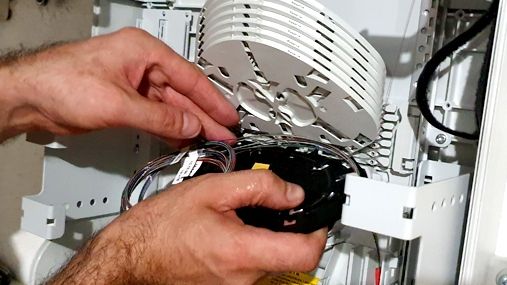
Realisation.
From the very beginning, the FTTS network was designed in such a way that there are sufficient reserves for XGS-PON splitters in all shafts where an mCan is installed. This means that all new customers can be connected directly from the sleeve to the OTO socket using optical fibre.
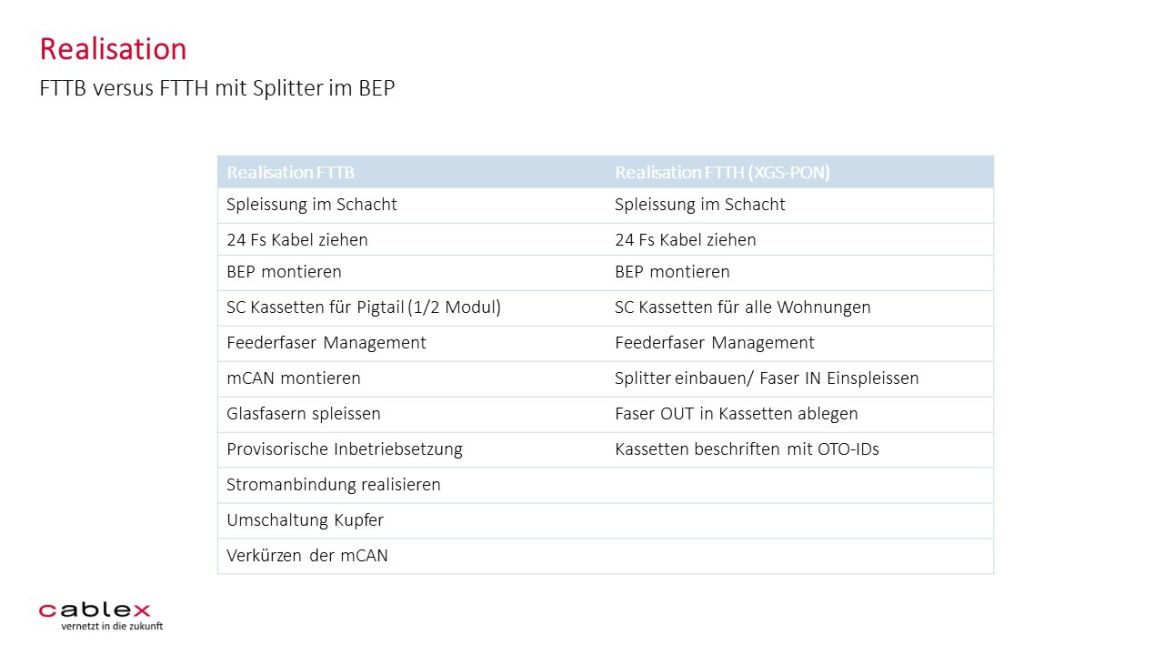
With regard to the network architecture, there are three different cases:
Case 1: Point-to-multipoint (P2MP) connection with splitter in the shaft (DP)
Case 2: Point-to-multipoint (P2MP) connection with splitter in the BEP (building)
This point-to-multipoint (P2MP) connection leads the optical fibre cable to the local exchange via a first splitter, and then via a second splitter in the BEP or shaft (DP) to the OTO socket.

Realisation of XGS-PON in the BEP.
In St. Moritz, several locations were connected using with XGS-PON. This included the municipal administration building in the neighbouring village of Celerina. Once the contract for the installation of a splitter between the homeowner and Swisscom has been signed, the so-called recording process takes place. A technician takes photos on site to document the infrastructure and "record" all of the information required for the installation. This information is used to create the Site Acquisition Report (SAR). In the run-up to the project, civil engineering work was carried out to connect the administration building with optical fibre cable, in order to guide the cable via the so-called cable route into the building, where it was fed into the house junction box.
The installation of the house junction box (HJB/BEP) and the splitter only takes a few hours to complete.
Barto Misko shows the work steps:
Splitter installation in the house junction box.




